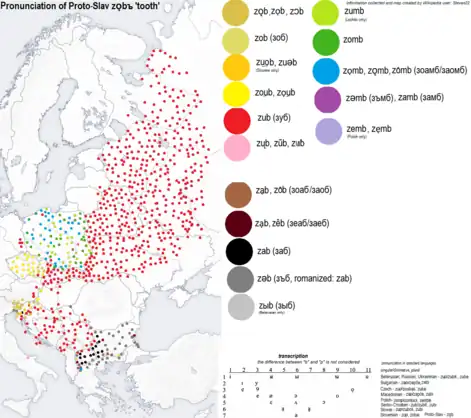Slavic Linguistic Atlas
The Slavic Linguistic Atlas (Russian: Общеславянский лингвистический атлас, abbreviation: SLA, OLA) is an international linguistic, slavistic and dialectological research project.[1][2][3]

History
Work on the Slavic Linguistic Atlas started with the 4th International Congress of Slavists held in Moscow in September of 1958.[1][3] The Congress established the OLA (Slavic Linguistic Atlas) Commission.[4] The Commission in turn created an international work group, organized and represented by individual Slavic centers of research.[3][1]
The participating institutions are: Academy of Sciences and Arts of Bosnia and Herzegovina; The Czech Academy of Sciences; The Bulgarian Academy of Sciences; The Croatian Academy of Sciences and Arts; The Institute for Lusatian Language, Literature and Culture (Bautzen – Budyšin); The Macedonian Academy of Sciences and Arts; The Montenegrin Academy of Sciences and Arts; The National Academy of Sciences of Belarus; The National Academy of Sciences of Ukraine; The Polish Academy of Sciences; The Russian Academy of Sciences; The Scientific Research Center of Slovenian Academy of Sciences and Arts; The Serbian Academy of Sciences and Arts, and The Slovak Academy of Sciences.[3]
Goals
Gathering field data for Slavic dialectology: phonetic, phonological, morphological, word-formation, lexical and syntactic data. The two groups of linguistic issues the OLA covers are historical-comparative and synchronic-typological.[3]
References
- "Общеславянский лингвистический атлас". slavatlas.org. Retrieved 2023-10-24.
- "HAZU OLA ALE • Općeslavenski lingvistički atlas i Europski lingvistički atlas". ola-ale.hazu.hr. Retrieved 2023-10-24.
- "OLA – eng". ola.zrc-sazu.si. Retrieved 2023-10-24.
- "Общеславянский лингвистический атлас, Комиссии ОЛА". slavatlas.org. Retrieved 2023-10-24.